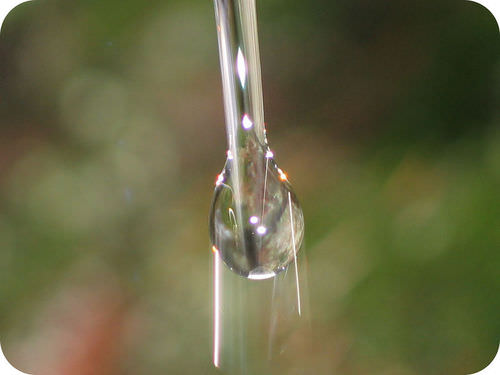13.11 熔化
章节大纲
-
Have you ever gone ice skating?
::你去过溜冰吗?In the winter, many people find the snow and ice beautiful. They enjoy getting out to ski or ice-skate. Others don’t find that time of year to be so much fun. When the snow melts, the roads get very sloppy and messy. Those people look forward to spring when all the ice and snow are gone and the weather is warmer.
::冬天,许多人发现雪和冰是美丽的。 他们喜欢去滑雪或溜冰。 其他人并不认为每年的这个时间是如此有趣。 当雪融化时,道路变得非常混乱和混乱。 当所有的冰和雪都消失,天气变暖时,这些人期待着春天的到来。Melting Point
::熔点Solids are similar to in that both are condensed states, with particles that are far closer together than those of a . However, while liquids are fluid , solids are not. The particles of most solids are packed tightly together in an orderly arrangement. The motion of individual atoms, , or molecules in a solid is restricted to vibrational motion about a fixed point. Solids are almost completely incompressible and are the densest of the three .
::固态与两种固态相似,两种固态都是凝结状态,粒子相近远比一个粒子更近。然而,虽然液体是液体,但固体不是。大多数固态的颗粒都是按顺序排列的。单个原子或固态分子的运动仅限于固定点上的振动运动。固体几乎完全无法压缩,并且是三个点中最稠密的。As a solid is heated, its particles vibrate more rapidly as the solid absorbs . Eventually, the organization of the particles within the solid structure begins to break down and the solid starts to melt. The melting point is the temperature at which a solid changes into a liquid. At its melting point, the disruptive vibrations of the particles of the solid overcome the attractive forces operating within the solid. As with boiling points , the melting point of a solid is dependent on the strength of those attractive forces. Sodium chloride (NaCl) is an that consists of a multitude of strong . Sodium chloride melts at 801°C. Ice (solid H 2 O) is a molecular whose molecules are held together by . Though hydrogen bonds are the strongest of the intermolecular forces , the strength of hydrogen bonds is much less than that of ionic bonds. The melting point of ice is 0°C.
::当固体被加热时,其颗粒会随着固体吸收而更迅速地振动。最终,颗粒在固体结构中的组织开始崩溃,而固体开始融化。熔点是固体变成液体的温度。在熔点,固体颗粒的振动在固体内运行的吸引力中产生干扰性震动。与沸点一样,固体的熔点取决于这些有吸引力的力量。氯化钠(NaCl)是由多种强力组成的。氯化钠(NaCl)在801°C时熔化。Ice(固体H2O)是一个分子,分子聚集在一起。虽然氢联结是长期分子力量中最强的,但氢联结的强度远远低于离子的强度。冰的熔点为0°C。The melting point of a solid is the same as the point of the liquid. At that temperature, the solid and liquid states of the substance are in equilibrium. For water, this equilibrium occurs at 0°C.
::固体的熔点与液体的熔点相同,在温度下,物质的固体和液体状态处于平衡状态。对于水,这种平衡在0°C时发生。
::H2O H2O(l)We tend to think of solids as those materials that are solid at room temperature. However, all materials have melting points of some sort. Gases become solids at extremely low temperatures, and liquids will also become solid if the temperature is low enough.
::我们倾向于将固体视为在室温下是固体的材料。 但是,所有的材料都有某种熔点。 气体在极低的温度下成为固体,如果温度足够低,液体也会变得固体。Table gives the melting points of some common materials.
::表提供了一些共同材料的熔点。Melting Points of Common Materials Material Melting Point (°C) hydrogen -259 oxygen -219 diethyl ether -116 ethanol -114 water 0 pure silver 961 pure gold 1063 iron 1538 Explore how and temperature relate to phase change in this simulation:
::在模拟中探索与阶段变化有关的方式和温度:Summary
::摘要-
The melting point is the temperature at which a solid changes into a liquid.
::熔点是液体的固体变化的温度。 -
Intermolecular forces have a strong influence on melting point.
::分子内部力量对熔点有强大的影响。
Review
::回顾-
Define melting point.
::定义熔点。 -
What happens when a material melts?
::当物质融化时会怎样? -
Would you expect ethane (C
2
H
6
) to have a higher or lower melting point than water? Explain your answer.
::您希望乙烷( C2H6) 的熔点比水高或低吗? 请解释您的答复 。
-
The melting point is the temperature at which a solid changes into a liquid.
